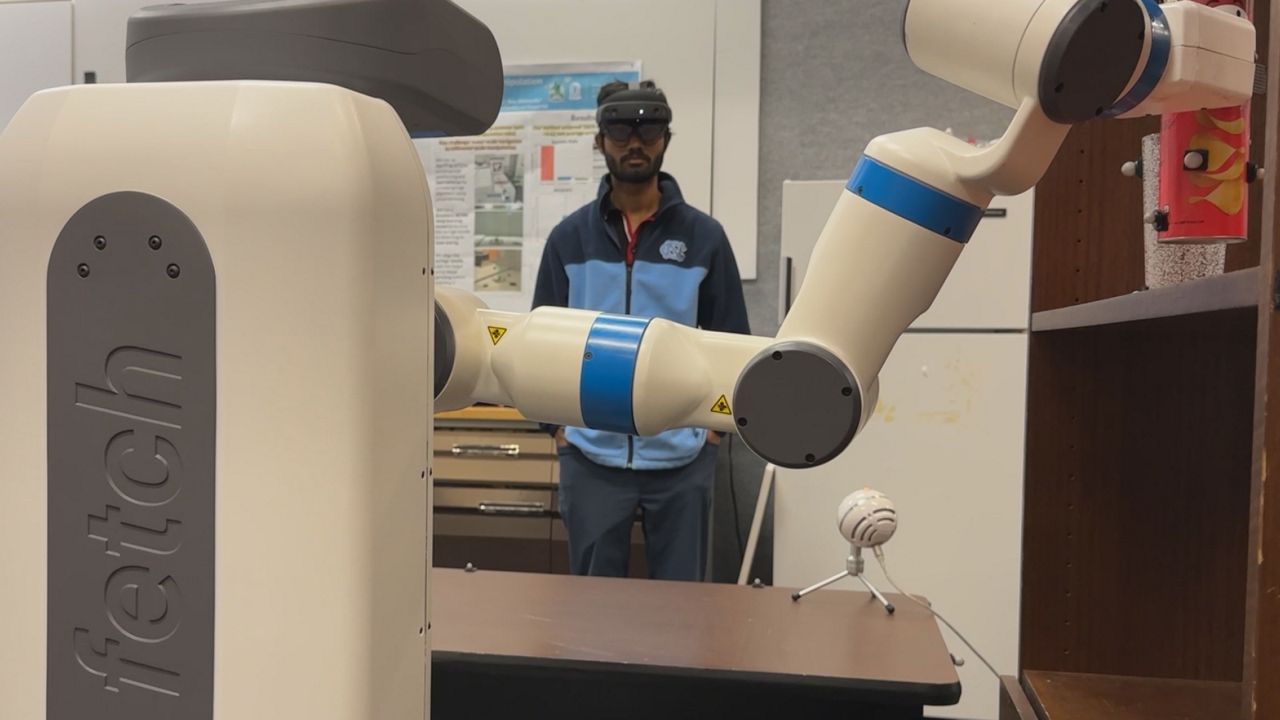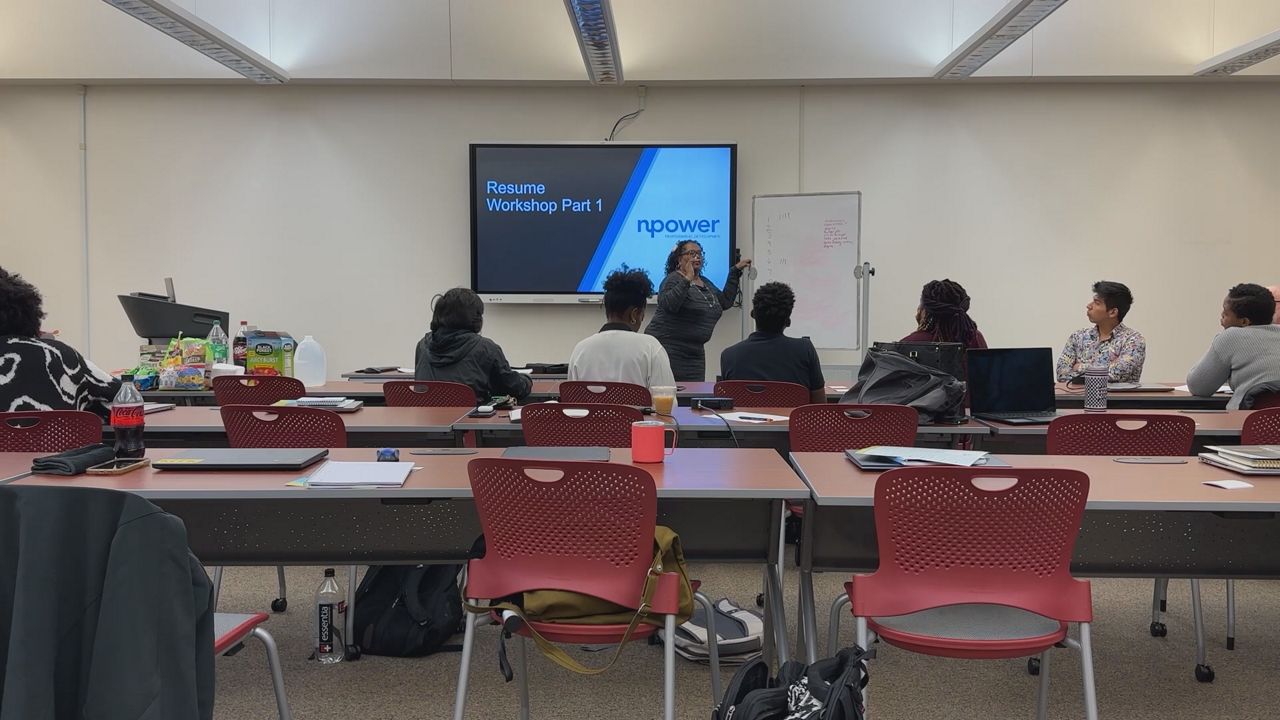CHAPEL HILL, N.C. — The global robotics race is heating up. Tesla recently released a video showing new progress on its humanoid robot, Optimus. Meta announced plans for a new division to build AI-powered robots to assist with physical tasks. Amazon is investing $10 billion into an AI campus in Richmond County.
At the University of North Carolina at Chapel Hill, researchers are working on the kinds of tools that may one day help robots fit seamlessly into our everyday lives.
Inside UNC's Interactive Robotics and Novel Technologies Lab, students and faculty are focused on building machines that work with people, not replace them.
"Our focus is really on making robots effective teammates for people," said lab director Daniel Szafir, an associate professor at UNC. "We want to use robots to augment human capabilities, whether that be in schools, at home, in the workplace or in health care facilities. You name it."
One standout project is led by student Lillyann Nekervis, who is turning a Boston Dynamics robot dog, known as Spot, into a potential guide companion for the visually impaired.
"This is not at all meant to replace seeing-eye dogs and guide dogs," Nekervis said during a demonstration. "This is just meant to be an alternative for someone who cannot take care of a dog, someone who doesn’t have the funds for a dog."
Spot uses cameras and sensors to navigate and stay close to its handler, who wears a QR code strapped to their leg. Nekervis hopes to eventually add voice commands, allowing Spot to understand and carry out spoken directions.
"You could say, 'Hey Spot, please take me to the UNC student stores.' It’d be able to create a path-planning finder and work with you on that," she explained.
Elsewhere in the lab, researchers are combining voice commands, spatial mapping and AI language models to create machines that can tidy up on command. One robot, nicknamed Fetch, is trained to move items on a table to a specific shelf when asked.

"The idea is that one day we’ll have robots in our homes helping with daily tasks we don’t necessarily want to do ourselves," graduate researcher Bryce Ikeda said. "That could include putting away the dishes or groceries."
While these may seem like small steps, researchers say this is exactly the kind of groundwork needed to make future robots more useful, safe and accepted.
"This is the first iteration, and it is in no way complete," said researcher Maitrey Gramopadhye, who collaborated with Ikeda on the project.
From startups to tech giants, the competition to dominate the robotics space is rapidly intensifying. Szafir believes robotics may see its own iPhone moment in the next 10 to 20 years. Still, concerns about ethics, job loss and runaway technology linger.
"I don’t have any plans to make Terminator," Nekervis joked. "All I want is for robots to help people and create a better future."
Szafir points out that many fears around new technology echo the past.
"You look back at the Luddite fears and the Industrial Revolution. Is automation going to take all of our jobs?" Szafir said. "It turns out, no, it actually created more jobs than ever."
The idea that what humans create could one day lead to their destruction dates back to ancient Greek mythology. A Pew Research Center survey earlier this year showed a divide between public opinion and expert forecasts. While 56% of AI experts said the technology will have a positive impact on the country, only 17% of U.S. adults felt the same.
Researchers in the lab believe the key to bridging that gap is thoughtful design, transparency and collaboration.
"It’s really the direction in which we as humans choose to take the technology," Gramopadhye said. "Our work is a great example of how robots can be an extension of you rather than a replacement of you."
"We put a lot of focus into the ethical side of robotics," Ikeda added. "We really want to bring humans and robots together in such a way that enriches our lives."






